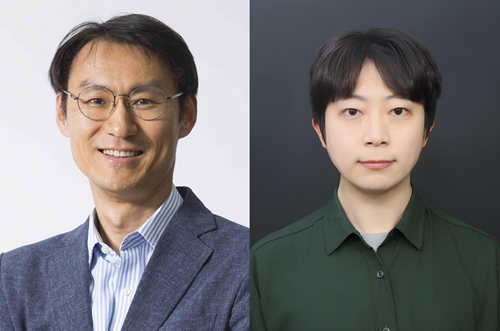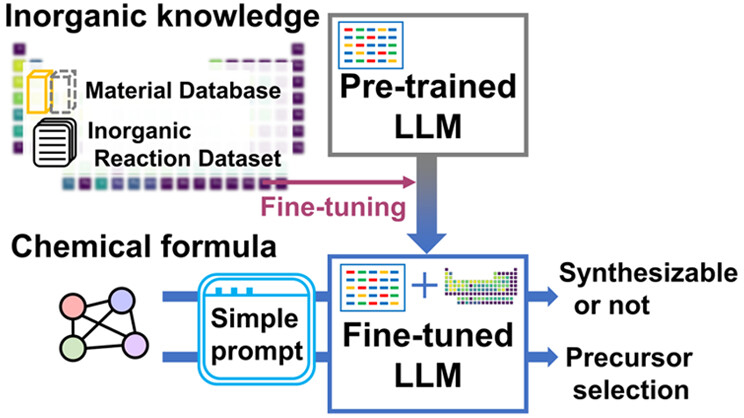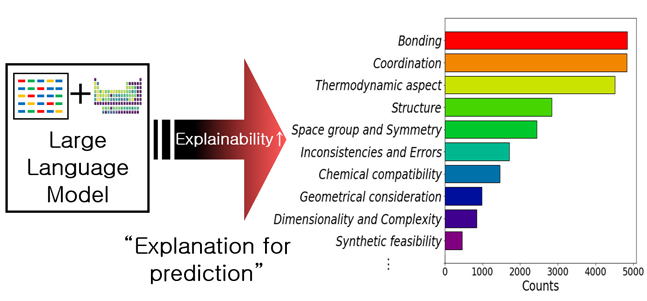- Expected to strengthen industrial competitiveness by reducing the time required for designing novel materials for semiconductors and secondary batteries
- Research findings published in the renowned international journals; Journal of the American Chemical Society and Angewandte Chemie International Edition

▲ (From left) Professor Yousung Jung (corresponding author) of the Department of Chemical and Biological Engineering at Seoul National University and Postdoctoral Researcher Seongmin Kim (first author) from the Institute of Chemical Processes at Seoul National University.
Seoul National University College of Engineering announced that Professor Yousung Jung’s research team in the Department of Chemical and Biological Engineering has successfully developed a technology that utilizes Large Language Models (LLMs) to predict the synthesizability of novel materials and interpret the basis for such predictions. This study was conducted in collaboration with Fordham University in the United States.
The findings of this research are expected to contribute to the novel material design process by filtering out material candidates with low synthesizability in advance or optimizing previously challenging-to-synthesize materials into more feasible forms.
The study, with Postdoctoral Researcher Seongmin Kim as the first author, was published in two renowned international chemistry journals: the Journal of the American Chemical Society (JACS) on July 11, 2024, and Angewandte Chemie International Edition on February 13, 2025.
Accurately evaluating the feasibility of synthesizing a material is crucial when developing novel materials. If material design does not adequately account for synthesizability, it can lead to unnecessary experiments on unverified hypothetical structures, resulting in inefficient use of research resources and time. This underscores the need for precise synthesizability prediction techniques.
However, existing prediction methods have been limited to evaluating the thermodynamic stability of materials, leading to low accuracy and significant discrepancies between predictions and actual experimental synthesis success rates. While machine learning models have been developed to address this issue, they have primarily focused on classification without explaining the rationale behind their predictions, thus lacking explainability and reliability.
To overcome these challenges, Professor Jung’s research team discovered that LLMs could not only accurately predict the synthesizability of inorganic crystal polymorphs but also ensure explainability.
The research team first fine-tuned a general-purpose LLM using inorganic crystal material datasets in a text-based format. The model was then trained to classify the synthesizability of specific hypothetical materials, predict precursor compounds needed for synthesis, and identify and interpret key factors influencing synthesizability. As a result, the LLM achieved a higher level of predictive accuracy than existing bespoke machine learning models.
Moreover, the team found that LLMs could go beyond mere predictions and provide interpretable explanations of why a particular material is synthesizable. This breakthrough opens the door to analyzing why certain hypothetical crystal structures are difficult to synthesize and identifying factors that hinder synthesizability. Additionally, the study successfully uncovered previously unknown complex correlations and factors that influence the feasibility of material synthesis.
This groundbreaking technology for synthesizability prediction and explanation is expected to contribute significantly to the domestic advanced materials industry, as well as enhance the competitiveness of the semiconductor and secondary battery industries. Traditional novel material discovery methods involve numerous trial-and-error experiments, but LLM-based predictive technology can accelerate material design and reduce development time.
Furthermore, since this work can be applied to designing semiconductor devices and high-efficiency battery materials, it is anticipated to help maintain Korea’s technological leadership in advanced materials and secure an early market advantage. If commercialized, this work could serve as a critical tool for research institutes and companies to rapidly identify new materials and evaluate their feasibility for mass production.
Professor Yousung Jung stated, “This study is significant as it demonstrates that LLMs can not only predict the synthesizability of novel materials with precision but also interpret the reasoning behind those predictions and reveal underlying chemical principles.” He added, “As LLM-based technologies continue to evolve, they are expected to provide more efficient and intuitive directions for novel material design.”
Postdoctoral Researcher Seongmin Kim, from the Institute of Chemical Processes at Seoul National University, plans to conduct follow-up research that integrates machine learning and materials science to explore paradigm shifts in novel material development.

▲ Figure 1. Schematic of Applying Large Language Models to Synthesizability Prediction of Novel Materials : A general-purpose LLM is fine-tuned with inorganic material knowledge datasets and used to predict the synthesizability and precursor compounds of hypothetical inorganic materials.

▲ Figure 2. Schematic of Explainable Prediction Using Large Language Models : This approach successfully identifies complex correlations and key factors affecting the synthesizability of inorganic materials, which were previously difficult to determine.
[Reference Materials]
1. Paper Published on February 13,
- Title/Journal : “Explainable Synthesizability Prediction of Inorganic Crystal Polymorphs using Large Language Models”, Angewandte Chemie International Edition
- DOI : https://onlinelibrary.wiley.com/doi/10.1002/anie.202423950
2. Paper Published on July 11, 2024
- Title/Journal : “Large Language Models for Inorganic Synthesis Predictions”, Journal of the American Chemical Society>
- DOI : https://pubs.acs.org/doi/10.1021/jacs.4c05840
[Contact Information]
Seongmin Kim, Postdoctoral Researcher, Institute of Chemical Processes, Seoul National University
Email: smkim.micc@gmail.com

